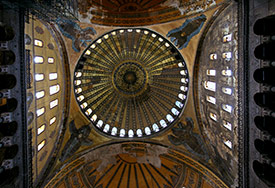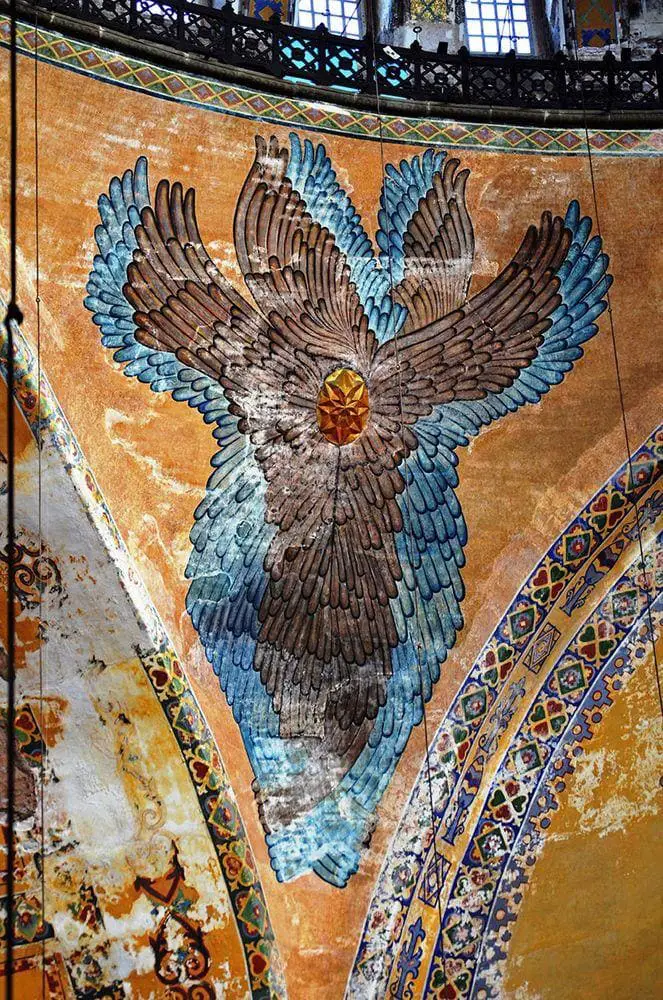Churches 🢔 Religious architecture 🢔 Architectural wonders 🢔 Categories of wonders
Wonder
Hagia Sophia

 In short
In short
One of the most daring buildings in the history of construction is Hagia Sophia – world’s largest church for almost one millenia. This building has left huge impact on the development of architecture.
 81.8%
81.8%
GPS coordinates
Name in Turkish
Name in Greek
Architectural style
Architects
Year of construction
Branch of Christianity
UNESCO World Heritage status
Map of the site
If you see this after your page is loaded completely, leafletJS files are missing.
 In detail
In detail
History
Previous churches
Roman Emperor Constantine the Great moved his residence to the small Greek town Byzantium in 330 AD and renamed it New Rome. As time went this town (Constantinople) turned into a huge city, surpassing Rome and any other city in Europe and Levant in importance and size.
First cathedral was built here in 360 AD – this structure was hailed to be one of the greatest buildings ever known. Unfortunately, it fell a victim to riots – the cathedral was burned down in 404.
Soon after – in 415 was built the second cathedral. It persisted for more than a century and was burned down in the Nika revolt in 532. Some ornamented marble blocks of this church remain.
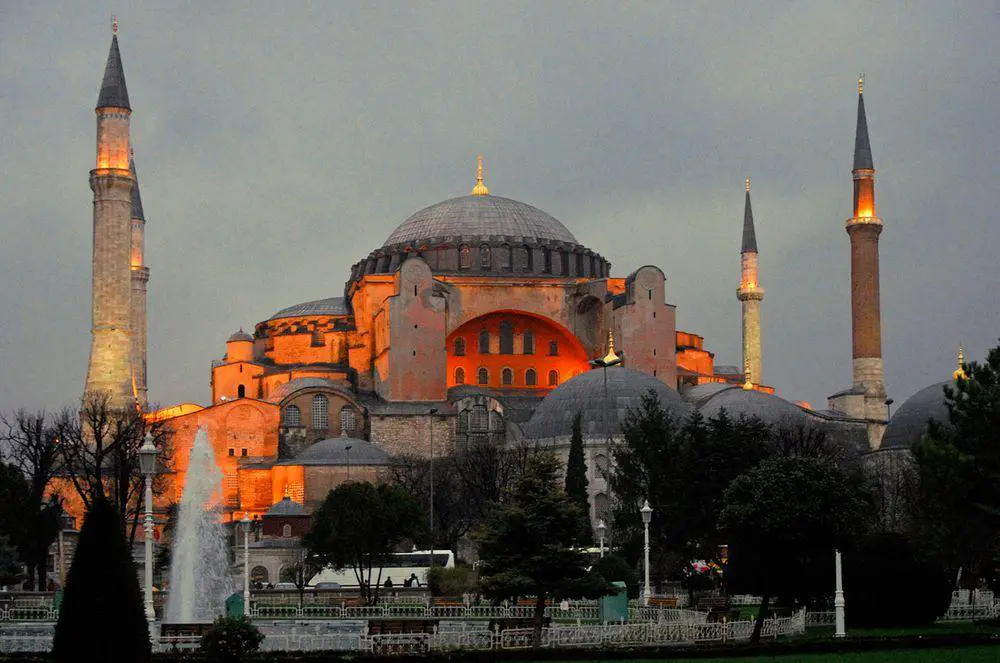
Emperor Justinian I
The golden time of Byzantine Empire came with the reign of Justinian I in 527 – 565. He was the last Latin speaking emperor and strived to reunite the former Roman Empire.
Justinian was successful in many aspects – his armies were victorious, there was established strict legal code.
Culture was important for the rebirth of empire as well – emperor had ambitious goals in this respect too and invited the best constructors, designers and artists to Constantinople. This was the rise of Byzantine style in arts and architecture.
In January 532 took place the violent Nika riots. Army suppressed the rampant crowd, killing thousands. Numerous buildings in Constantinople were burned down and demolished, including the previous cathedral.
Justinian I saw this as a possibility for further ambitious construction projects, including a new cathedral – the main church in the empire and the key place for imperial ceremonies.
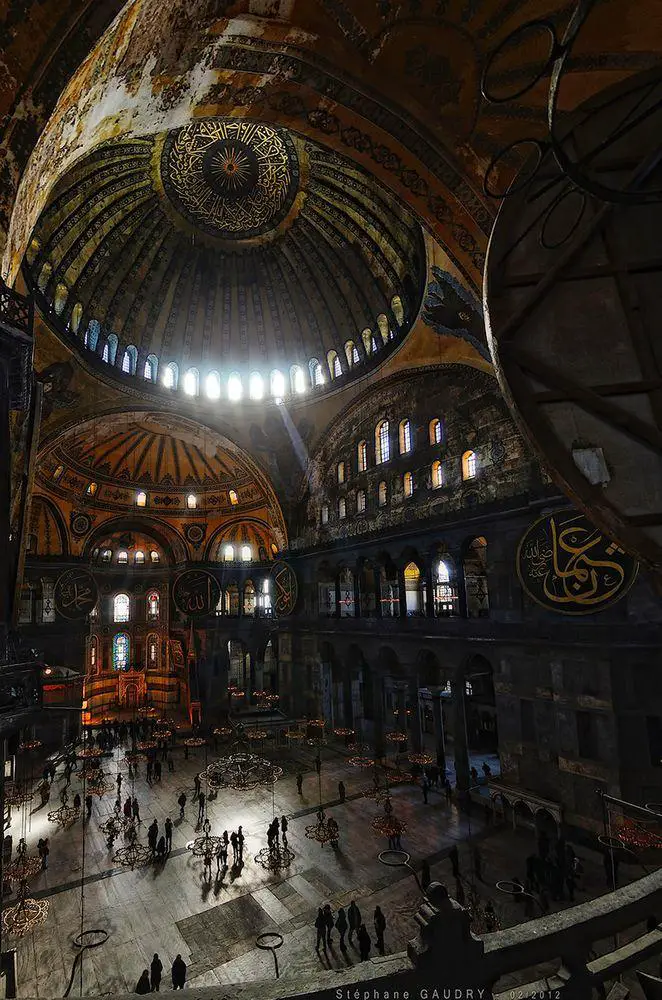
Construction of new cathedral
Emperor wanted to see the new cathedral as something principally different, especially impressive. The cost was no question – at least it seemed so: empire at this time was successful and new colonies brought huge income.
Greek physicist Isidore of Miletus and mathematician Anthemius of Tralles (died soon after the start of construction) were invited to design the building – and this could be the key of the success, as these masterminds provided very daring, innovative design. None of them were experienced architects or constructors: it seems that Justinian I wanted to derogate from the traditional design and habits.
Materials for the building were brought from the whole empire – present-day Turkey, Greece, Syria, Egypt. More than 10 thousand people were employed in construction. Works were done in haste – this caused problems later.
On 27 December 537 the new cathedral was inaugurated with large festivity. Now try to imagine – would it be possible today to design, contract, and build an innovative building in five years’ time? People in Byzantine Empire certainly knew how to organize large scale works!
Name of catehedral
The name of the cathedral – Hagia Sophia – in Greek (Ἁγία Σοφία) means – "Holy Wisdom" – a part of Holy Trinity as seen by the church back in those times. This term is interesting as it is older than Christianity and shows the linkage between Christianity and Greek philosophy.
While today Holy Trinity is defined as God in three hypostases – the Father, the Son, and the Holy Spirit, in Early Christianity there were other theories. Thus, Theophilus of Antioch in the late 2nd century AD defined the Trinity as God, His Word (Logos), and His Wisdom (Sophia). This concept is based on Hellenistic philosophy and religion. Even the word philo-sophia itself means "Love of wisdom".
Plague of Justinian
Forces of nature turned against Justinian I in 541 – 542 when a deadly pandemic (Plague of Justinian) eliminated nearly a third of the population in the empire and weakened it. Emperor caught the plague himself and survived – but his invasion in Western Europe was stopped. Also, the expensive construction projects overstretched the financial capabilities of the empire and weakened it.
Earthquakes
The building has persisted up to this day – but thanks to numerous rebuildings and reconstructions.
Main enemies to Hagia Sophia have been earthquakes, wars, and neglect. Especially dangerous have been earthquakes.
First major earthquake hit in 558 – and the enormous dome of the new cathedral collapsed! As it turned out – the dome was too flat and pushed the sustaining walls outward. Due to the fast construction, the mortar did not have the time to become dry and thus the walls gave up and deformed.
Isidorus the Younger was invited to fix the problem – and did this with great skill.
He straightened the walls and rebuilt the dome in 562, using a lighter material. To make the construction more stable, he made the dome more round, thus elevating it. Now the interior height of the dome is 55.6 m.
Next devastating earthquakes were in 869 and 989 – then the dome collapsed partly. Armenian architect Trdat reinforced the church with ribs, the interior was renovated in 994.
In 1344 struck the next earthquake and weakened the construction – dome partly collapsed in 1346. Cathedral was rebuilt and opened in 1354.
Important reinforcements were made by Ottoman architect Mimar Sinan in the 1570s – he added structural support to the aging building which has helped to preserve it during the earthquakes up to this day.
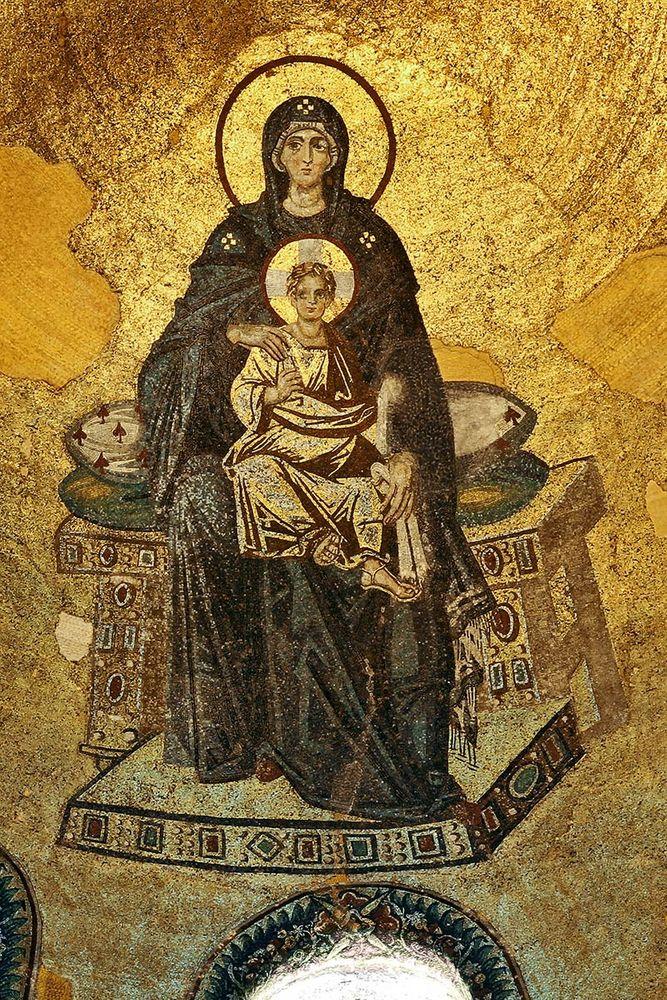
From cathedral to mosque
Constantinople was ransacked in 1204 by… Christian Crusaders. They pillaged the cathedral, removing valuable relics and sending them to the West, beautiful golden mosaics were demolished. Crusaders occupied Constantinople in 1204 and held it until 1261, Hagia Sophia was turned into Roman Catholic cathedral.
When Byzantines recaptured the city, the cathedral was in truly sad state and extensive repairs were needed.
In 1453 Constantinople was taken by Sultan Mehmed. City and Hagia Sophia were pillaged for three days, people hid in the cathedral and many were slain there. Priests performed Christian rites until stopped by the invaders. The church was desecrated and was turned into imperial mosque.
Land area around the former cathedral was endowed to the management of mosque (Waqf) in order to raise the income to renovate and extend the mosque. These properties included thousands of houses and shops.
Christian accessories of the church – bells, altar, iconostasis (15 m tall, made from silver) and other items were removed, beautiful mosaics were covered with plaster.
Large scale restorations took place in 1847 – 1849, when the building was reinforced and redecorated, four minarets were redesigned to have the same height.
From mosque to museum
Turkey became secular republic after the World War I and in 1935 a museum was opened in Hagia Sophia.
The interior was transformed. Carpets were removed to open the original floor. Plaster in many places was removed to reveal the Christian mosaics. Restorers often faced a dilemma – to leave the beautiful Islamic art or to remove the plaster to open the invaluable mosaics.
The building deteriorated in the late 20th century. Dome was reinforced in 2006 but further works are necessary.
Design
Size
Cathedral is 82 m long, 73 m wide and 55 m high (height of dome).
Interior height of the dome is 55.6 m from the floor. Due to earthquakes and repairs throughout the centuries the dome has become slightly elliptical, its diameter is 30.86 – 31.24 m.
Structure and lighting
Hagia Sophia was the first major building to use pendentives – a specific design which allows to create very large internal space without the use of columns. It allows a transition from circular dome to rectangular base.
Dome has 40 windows, which let in the light. This light inside the enormous structure creates somewhat mysterious feel and it seems as if the dome is hovering above the light. The enormous structure is surprisingly light – as if the light is created inside the cathedral. This was another great achievement in times when windows and light in buildings were not that common.
Adornment
Hagia Sophia was the most beautiful and richest decorated cathedral in Christian world for many centuries. Creation of the gold coated mosaics lasted for long decades after the official opening of the cathedral.
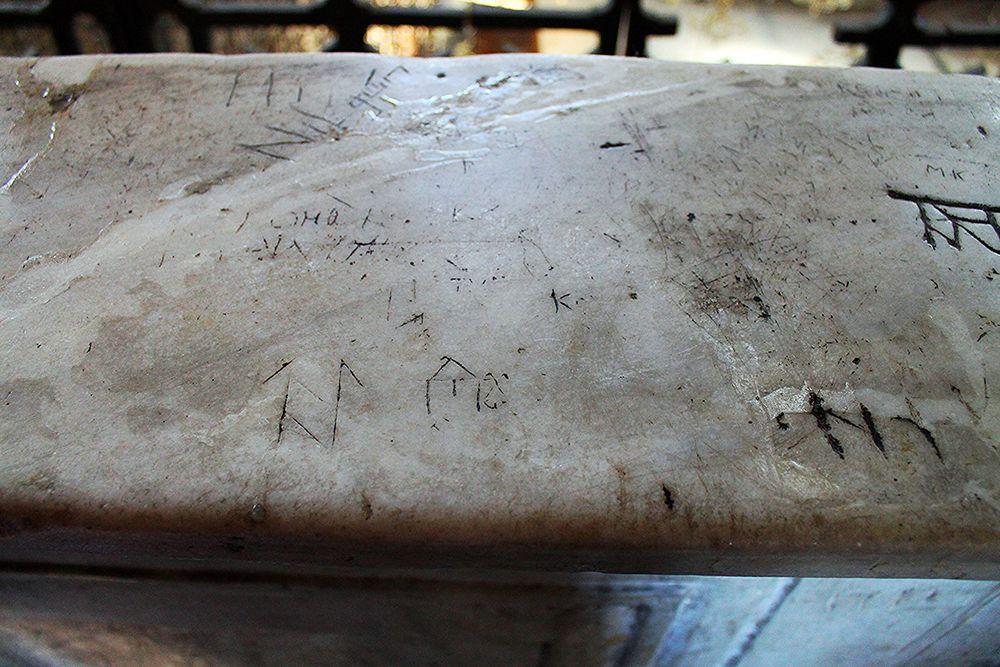
Building has even an runic inscription – graffiti, left by Varangian Guard – elite troops of Byzantian Army, mostly Scandinavians.
Interior of the church has interesting symbols, characteristic for early Christianity but now almost forgotten, such as Hexapterygon – six-winged angel.
Influence
Hagia Sophia is one of most daring buildings in the history of architecture. It was the world’s largest cathedral for nearly 1000 years – until 1520, it has persisted for 15 centuries and witnessed major historical events.
Cathedral left huge impact both on Christian and Islamic architecture – many great mosques in Turkey and elsewhere are modelled after this structure. Byzantine style was in a way redefined by this building and many aspects of its structure were replicated across Europe in coming centuries.
 Linked articles
Linked articles
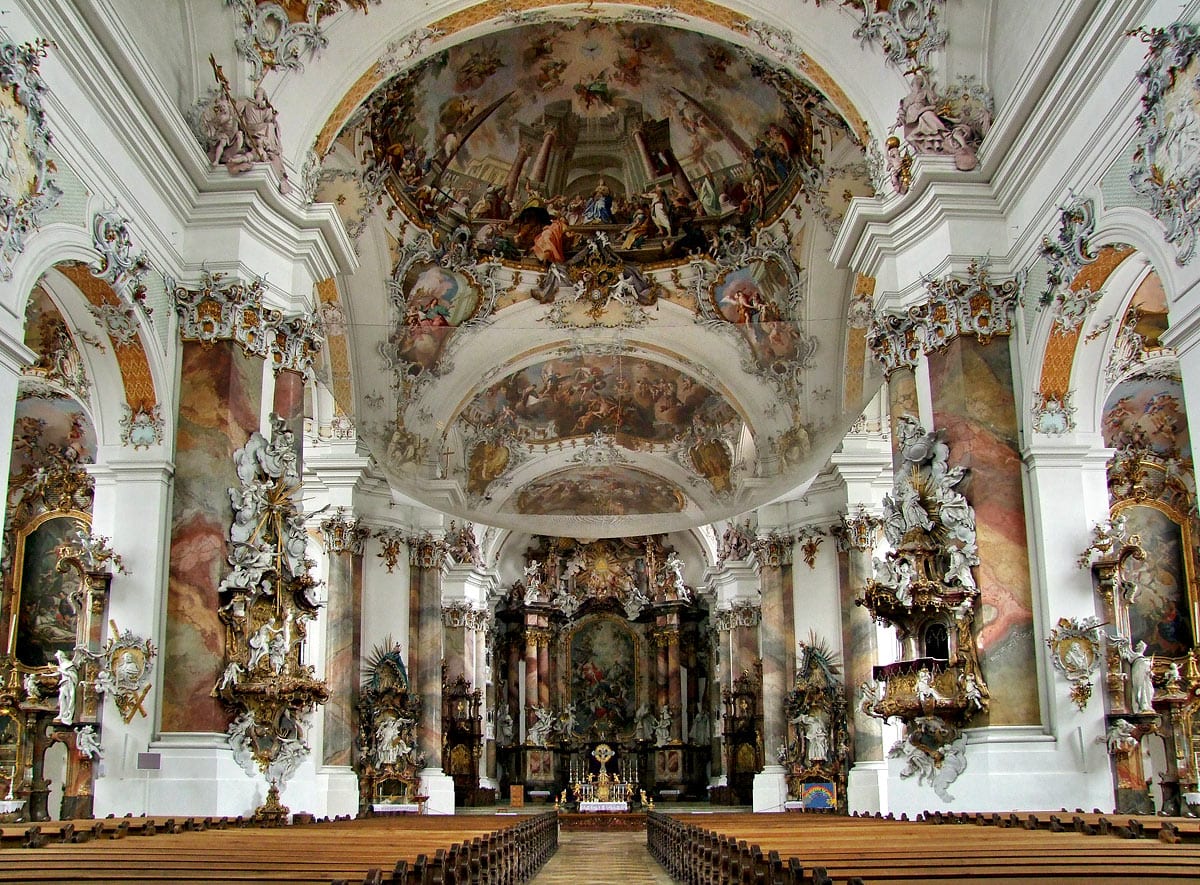
Churches
Throughout the millennia Christian churches have been the epitome of architecture and arts achievements in Western culture.

Wonders of Turkey
Turkey is located at the crossroads of civilizations and has one of the richest and most diverse arrays of archaeological and architectural landmarks. Few countries in the world have experienced the rise and fall of that many distinct cultures as present-day Turkey did.
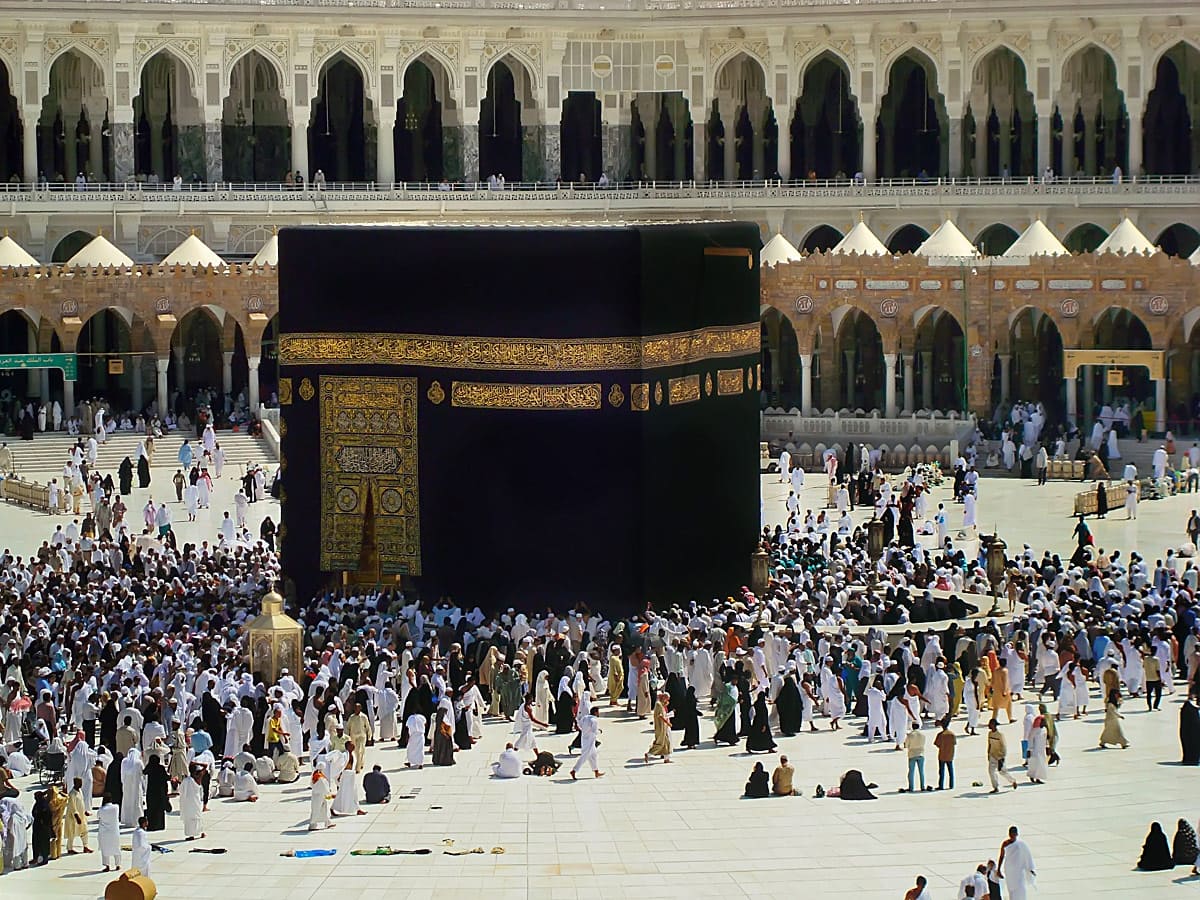
Islamic shrines
Place for worship in Islam is called a mosque. Mosques serve also for education, news exchange, and dispute settlement.
Initially, in the 7th century mosques were unpretentious, large halls for gatherings. Over time, as Islam was spreading, there developed diverse, locally adapted architectural forms of mosques.
 Recommended books
Recommended books
The Hagia Sophia: The History of the Famous Church and Mosque
The Hagia Sophia, built from 532-537, is inarguably the masterpiece of Byzantine architecture and one of the greatest buildings ever constructed. Upon its completion, the Hagia Sophia remained the largest enclosed space in the world for nearly a thousand years, a reign that only ended after the rebuilding of St. Peter’s in Rome.
Hagia Sophia: A History
Hagia Sophia is more than 1,400 years old. It was a Christian Church, then a Muslim mosque, and is now a museum. Here, from National Book Award winner Richard Winston, is the extraordinary story of one of the world’s great architectural treasures and its everchanging role in the history of Constantinople.

